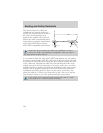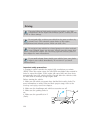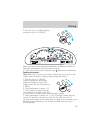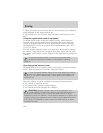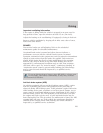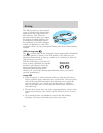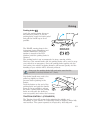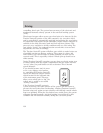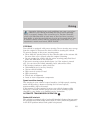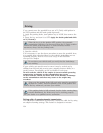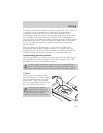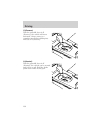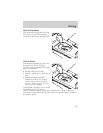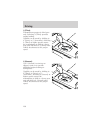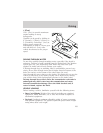
controlling wheel spin. The system borrows many of the electronic and
mechanical elements already present in the anti-lock braking system
(ABS).
Wheel-speed sensors allow excess rear wheel spin to be detected by the
Traction Control portion of the ABS computer. Any excessive wheel
spin is controlled by automatically applying and releasing the rear brakes
in conjunction with engine torque reductions. Engine torque reduction is
realized via the fully electronic spark and fuel injection systems. This
process is very sensitive to driving conditions and very fast acting. The
rear wheels “search” for optimum traction several times a second and
adjustments are made accordingly.
The Traction Control system will allow your vehicle to make better use
of available traction on slippery surfaces. The system is a driver aid
which makes your vehicle easier to handle primarily on snow and ice
covered roads. This is especially evident if wheel spin-up should occur
while turning.
During Traction Control operation you may hear an electric motor type
of sound coming from the engine compartment and the engine will not
“rev-up” when you push further on the accelerator. This is normal
system behavior.
If you should become stuck in snow
or on a very slippery road surface,
try switching the Traction Control
system off using the traction control
switch located on the left-hand side
of the instrument panel. This may
allow excess wheel spin to “dig” the
vehicle out or enable a successful
“rocking” maneuver.
If the Traction Control system is
cycled excessively, the brake portion of the system will shut down to
prevent the rear brakes from overheating. A limited Traction Control
function using only engine torque reduction will still help control wheels
from over-spinning. When the rear brakes have cooled down, the system
will again function normally. Anti-lock braking is not affected by this
condition and will function normally during the cool down period.
OFF
TRAC
Driving
132



